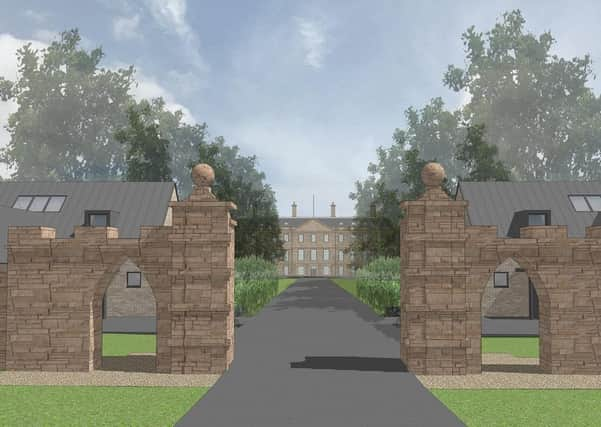Historic Fife house to be converted into flats after plans approved


The development will see the historic property converted into 28 flats, with another eight houses built on the estate.
The three-storey Leslie House was gutted by a fire in 2009, which left just the shell of the structure – but the plans will breathe new life into the building.
Advertisement
Hide AdAdvertisement
Hide AdThe development will see a mix of one, two, three and four bedroom flats created. Elements of the remaining structure will be retained, although a new roof and windows will be required.
Six houses, which would be built in the garden, will be a mix of three and four bedroom properties. Another two homes will be built as gatehouses at the front of the estate.
Work can not start on the houses until the final flat has been completed.
A total of 50 trees might be removed as part of the development.
Advertisement
Hide AdAdvertisement
Hide AdCllr Derek Noble said he wanted to see Leslie House redeveloped, but raised concerns the plans were an “overdevelopment” of the site and about the clearance of the trees.
Cllr Dave Coleman added: “It may be too many houses, but it’s good to see the building being saved.”
Leslie House was originally built as a courtyard palace in 1667-1672 by the Seventh Earl of Rothes.
In 1904, the house was inherited by Noël Leslie, Countess of Rothes, and Norman Evelyn, Earl of Rothes. A British philanthropist, Noël went on to survive the Titanic disaster and became a well-known heroine for her role in helping to row a lifeboat to safety.
Advertisement
Hide AdAdvertisement
Hide AdThe Countess then went on to treat wounded soldiers from World War I, converting a wing of Leslie House into a hospital.
In the aftermath of the war, Leslie House was sold to Sir Robert Spencer Nairn and remained a private residence until 1952, when it was gifted to the Church of Scotland and became a care home.
The house was then sold to Edinburgh-based Sundial Properties in 2005, which obtained planning permission to restore and convert the property in 2008. However, these plans went up in flames as the fire in 2009 destroyed much of the building, putting the project on hold.
Comment Guidelines
National World encourages reader discussion on our stories. User feedback, insights and back-and-forth exchanges add a rich layer of context to reporting. Please review our Community Guidelines before commenting.